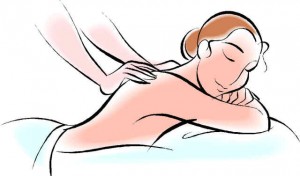Health
Mayo Clinic’s Top Ten Therapies

The Mayo Clinic is a premiere patient care complex in Rochester, Minnesota. They are known for ground-breaking treatments, excellent care, and pioneering in healthy therapies to stay well.
Mayo Clinic College of Medicine
Amit Sood, M.D.
Dozens of US hospitals and major medical centers now offer complementary treatments in addition to conventional medical care–and some of these therapies are covered by health insurance.
Problem: With so many conflicting claims being made regarding complementary therapies, how do doctors at these institutions decide which to recommend to the patients they treat? At the world-renowned Mayo Clinic, the following four criteria are used…
Is it safe? If a complementary treatment is completely safe, then it may be worth trying, even if its effectiveness has not been proven definitively by scientific studies.
Is it standardized? Herbs and dietary supplements are subject to limited regulatory oversight by the FDA. Therefore, these products frequently are not standardized to contain a consistent level of ingredients, potency and purity. Some herbs and dietary supplements do provide benefits, but you should work closely with a knowledgeable doctor when using them.
Does it meet a need that cannot be met by conventional medicine? When it comes to stress, for example, conventional medicine includes treatments, such as anti-anxiety drugs or antidepressants, which potentially can help people. But such medications often have side effects and may not be suitable for long-term use. Complementary therapies, such as yoga, massage and meditation can help relieve stress without the risk for serious side effects.
Does it positively affect not only patients, but also those with whom they interact? The calming influence of several complementary treatments, such as meditation and music therapy, promotes a feeling of relaxation and well-being that helps bring harmony to one’s interactions with family and friends. Positive, supportive relationships, in turn, are believed to help speed recovery from many types of illness.
Here is an alphabetical listing of Mayo Clinic’s top 10 complementary treatments — and the research that supports their use…
Best Treatments
1. Acupuncture In this treatment from traditional Chinese medicine, acupuncturists insert thin needles into strategic, energy-balancing points on the body. Acupuncture can prevent & treat nausea, vomiting and help relieve many types of pain; osteoarthritis, low back pain, neck pain, headaches and post surgical pain. Patients who receive acupuncture typically receive up to 12 treatments, usually given once or twice a week.
Standout scientific evidence: German researchers tracked more than 3,000 patients with hip or knee osteoarthritis and found that those receiving acupuncture experienced significantly more pain relief than those who did not receive acupuncture treatments.
2. Guided Imagery Patients imagine a beautiful, soothing environment, such as a warm beach. Guided imagery, also referred to as visualization, helps reduce anxiety in patients who become claustrophobic during magnetic resonance imaging (MRI) scans, who are having outpatient surgery without general anesthesia or who have been diagnosed with a life-threatening disease, such as cancer.
Standout scientific evidence: In a study conducted at the University of Akron in Ohio, a group of 53 women receiving radiation therapy for breast cancer either listened to guided imagery tapes once a day or did not. The women listening to the tapes felt more comfortable and less anxious, particularly during the first three weeks of treatment.
3. Hypnosis The patient is led into a state of deep relaxation and focused attention by either a hypnotherapist or an instructional audio (self-hypnosis), and verbal suggestions are made to help relieve anxiety, pain, tension headaches and insomnia.
Standout scientific evidence: Doctors at the Mount Sinai School of Medicine in New York City analyzed 20 studies on hypnosis and surgical patients. In 89% of cases, surgical patients who were hypnotized had less pain, used less pain medication and recovered faster.

Massage isn’t just for relaxation, it helps keep a body vital and a mind refreshed, and more…
Our bodies are our gardens—our wills are our gardeners. ~William Shakespeare
4. Massage A massage therapist manipulates the body’s soft tissue — muscle, skin and tendons — using fingertips, hands and fists. Massage treats anxiety and low back pain and improves post surgical healing.
Standout scientific evidence: Studies conducted at the University of Miami’s Touch Research Institute show that massage can help relieve back pain and strengthen the immune system in women with breast cancer by increasing levels of natural disease-fighting cells.
5. Meditation Attention is focused on breathing and/or on a word, phrase or sound (mantra), leading to a more relaxed body and calmer mind. Doctors at the Mayo Clinic use meditation to treat patients with anxiety and high blood pressure and to help people quit smoking without medication.
Standout scientific evidence: An analysis of 20 studies on meditation found that this treatment could help patients cope with epilepsy, premenstrual syndrome (PMS), menopausal symptoms, autoimmune disease and anxiety during cancer treatment.
 6. Music Therapy Many complementary medical centers employ music therapists. However, you can use music therapy on your own by listening to soothing music or your favorite music.
6. Music Therapy Many complementary medical centers employ music therapists. However, you can use music therapy on your own by listening to soothing music or your favorite music.
Standout scientific evidence: At Abbott Northwestern Hospital in Minneapolis, a study of 86 patients recovering from heart surgery showed that those receiving music therapy experienced less anxiety and pain.
7. Spinal manipulation. Practiced by chiropractors, osteopaths (medical doctors whose training allows them to correct structural problems in the musculoskeletal system) and physical therapists, this hands-on technique adjusts the spine to properly align the vertebrae with muscles, joints and nerves. Spinal manipulation is an accepted medical practice for low back pain, but the evidence supporting its use for other medical problems has been somewhat conflicting.
Standout scientific evidence: At the University of California, Los Angeles, School of Public Health, a study of 681 patients with low back pain showed that chiropractic care was as effective as medical care, including painkilling drugs, in relieving discomfort.
8. Spirituality For some people, this means religious observance, prayer or faith in a “higher being.” For others, spirituality can be found through a deep appreciation of nature or art or participation in a secular community.
Standout scientific evidence: Researchers in Virginia who conducted an analysis of 16 studies on illness and “religious intervention” — praying or attending religious services — found that spirituality can decrease the length of hospital stays and fever in patients with severe infections… increase immune function… help relieve rheumatoid arthritis symptoms… reduce anxiety… and improve outcomes in people with heart disease.
9. Tai Chi This gentle exercise, derived from Chinese martial arts, consists of a series of defined postures and movements performed slowly and gracefully. Medically, it is used to improve balance in older people who are prone to falls.
Standout scientific evidence: In a study of 278 elderly people at Vrije University in Amsterdam, The Netherlands, those who performed tai chi three times a week for six months had 50% fewer falls and fewer injury-causing falls.
10. Yoga These stretching postures and breathing exercises, which originated in India, help calm body and mind. Yoga is particularly effective for stress relief, low back pain, carpal tunnel syndrome, osteoarthritis, anxiety and depression.
Standout scientific evidence: In a study conducted at All India Institute of Medical Sciences in New Delhi, 98 people with heart disease or diabetes who practiced the postures and breathing techniques of yoga had significant reductions in total cholesterol and blood sugar.

